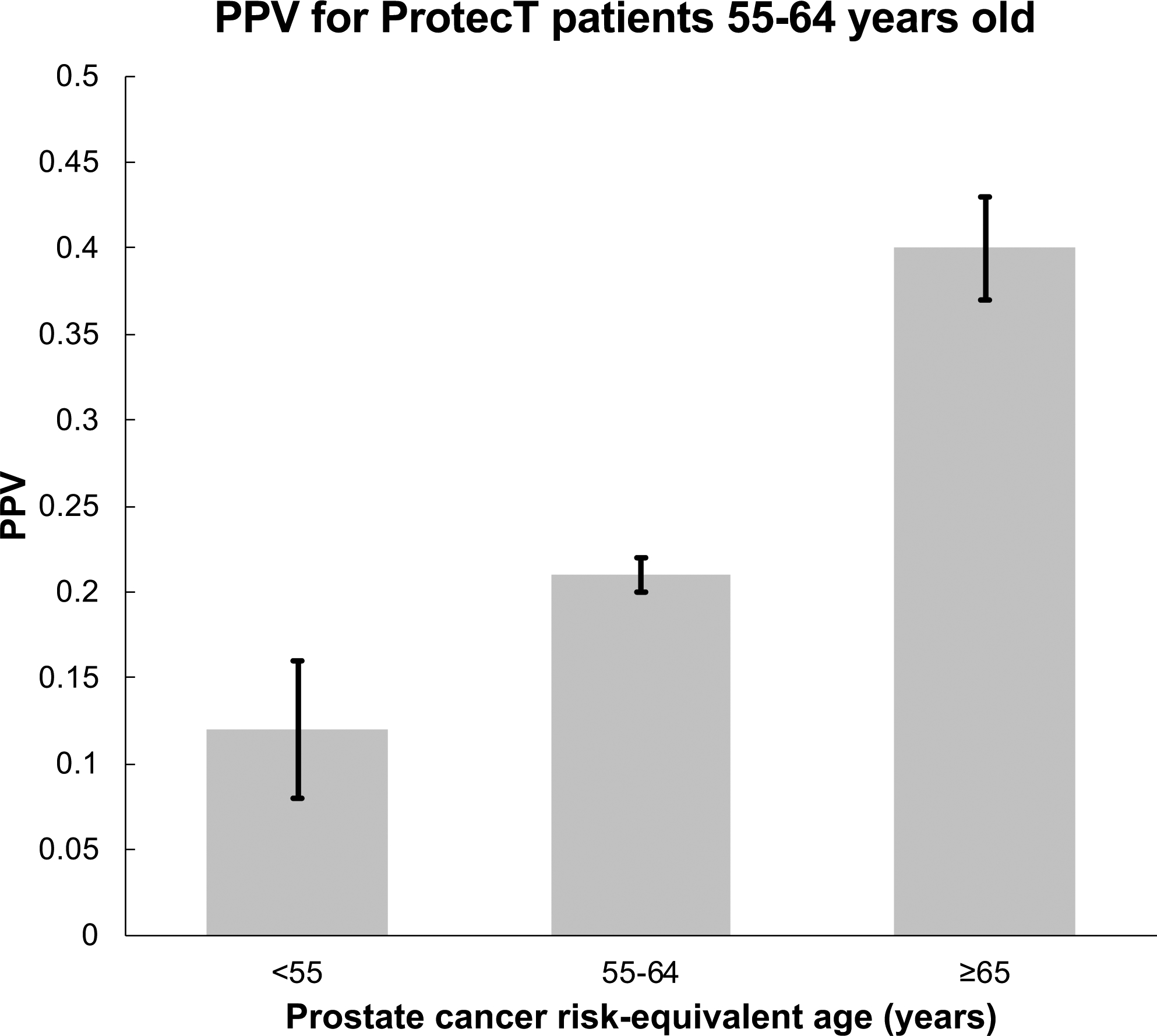Figure 3.

Application of prostate cancer risk-equivalent age to the clinical scenario of whether to screen a 60-year-old man (median age from ProtecT). The risk-equivalent age is the patient’s true age adjusted by PHS level. This plot shows results for all men from ProtecT aged approximately 60 years old (range: 55–64), grouped by their calculated prostate cancer risk-equivalent age: <55, 55–64, or ≥65. The positive predictive value (PPV) of PSA testing for clinically significant prostate cancer and the corresponding standard errors of the mean of PSA testing are shown for each of these 3 groups.
